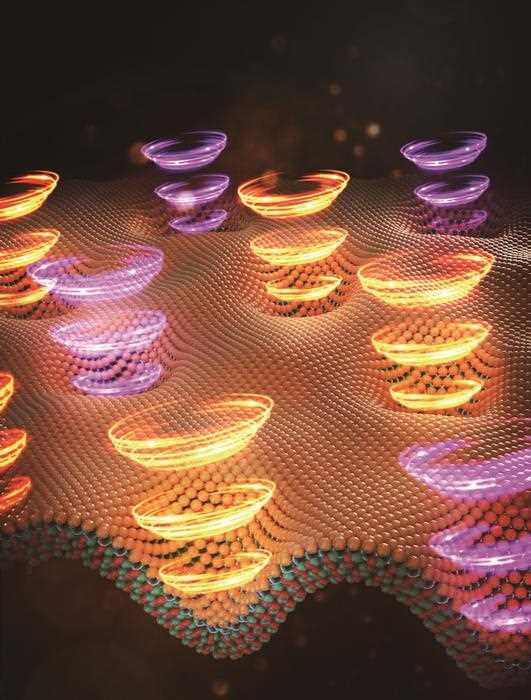Researchers at Los Alamos National Laboratory say they have developed a method of generating and selectively polarizing individual photons that may be the breakthrough needed to create an ultra-secure quantum internet.
Previous methods of creating individual photons were bulky and expensive, as were methods of polarizing individual photons. The newly proposed process combines both tools into one low-cost system, and if scalable, could be a critical tool for encoding and transmitting data in a quantum internet.
Quantum Internet Would Be Ultra-Fast and Virtually Unhackable
In the macro world, the speed of communication and the paths communicated data must take are governed by seemingly immutable laws of physics like the speed of light or Newton’s Laws of Motion. But in the quantum world, individual particles can behave in ways that seemingly violate those laws.
Those unique properties of quantum physics have led engineers and security professionals alike to envision the concept of a quantum internet. In many ways, a quantum internet would function like the current one. But behind the scenes, the way data is communicated, and the speed at which it is communicated might be totally different and virtually impossible to hack.
These potential benefits have even led the U.S. Government to declare its intention of one day equipping the country with a quantum internet. However, as companies and organizations working on quantum computers have learned, taking advantage of the unique properties of the quantum world, like quantum superposition and quantum entanglement, has proven particularly fleeting or elusive for practical applications.
The reasons are many, but one of the main limitations is the cost and difficulty of producing individual photons that can be polarized on demand, a necessary step toward quantum entanglement that is at the very heart of quantum internet proposals. Now, researchers say they have discovered just such a process. And if their follow-up efforts continue to show success, the goals of a quantum internet may be closer than ever before.
Generating Individual Photons While Controlling Polarization
The first step in the Los Alamos team’s process involved stacking a single-molecule-thick layer of tungsten diselenide semiconductor onto a thicker layer of nickel-phosphorus trisulfide magnetic semiconductor. Next, atomic force microscopy was used to forge a series of tiny (nanometer scale) indentations onto the surface of the bi-layer material.
According to a press release announcing the published research, each indentation was roughly 400 nanometers in size. For comparison, they note that “over 200 of such indents can easily be fit across the width of a human hair.”
As hoped, when the team focused a laser onto the newly indented bilayer material, electrons from the tungsten diselenide monolayer fell off and settled into the potential energy wells, or depressions, within the nanoscale indentations. Plus, the indentations seemed to alter the normal magnetic properties of the nickel-phosphorus trisulfide, creating what the researchers described as magnetic “moments” over each depression. These magnetic moments caused a circular polarization of the emitted photons, essentially offering the researchers a way to control the polarization of these sub-atomic particles.
“The polarization state is a means of encoding the photon,” the press release explains, “so this achievement is an important step in the direction of quantum cryptography or quantum communication.”
This sentiment was confirmed by Han Htoon, one of the Los Alamos research team, who reiterated the benefit of both producing and polarizing photons in a single process.
“With a source to generate a stream of single photons and also introduce polarization, we have essentially combined two devices in one,” Htoon said.
Applying Generating and Programming Photons Toward the Vision of a Quantum Internet
Following the publication of their work in the journal Nature Materials, the team says they are working on a process using electrical and microwave stimuli to modulate the degree of the circular polarization they create. If successful, it would offer a more precise means of encrypting information into the photon stream, another key step toward a quantum internet.
Last, the team will tinker with coupling their photon stream into waveguides. These microscopic conduits of light would be the main components of a photonic circuit, allowing for the propagation of photons in one direction, just like in an electrical circuit. These types of circuits, the researchers say, “would be the fundamental building blocks of an ultra-secure quantum internet.” And they reiterate their new approach is much simpler and more cost-effective than previous methods.
“Our research shows that it is possible for a monolayer semiconductor to emit circularly polarized light without the help of an external magnetic field,” said Htoon. “This effect has only been achieved before with high magnetic fields created by bulky superconducting magnets, by coupling quantum emitters to very complex nanoscale photonics structures, or by injecting spin-polarized carriers into quantum emitters. Our proximity-effect approach has the advantage of low-cost fabrication and reliability.”
Christopher Plain is a Science Fiction and Fantasy novelist and Head Science Writer at The Debrief. Follow and connect with him on X, learn about his books at plainfiction.com, or email him directly at christopher@thedebrief.org.

